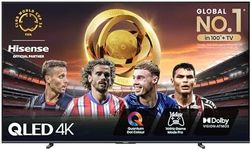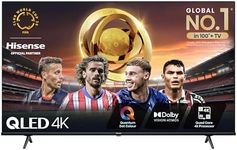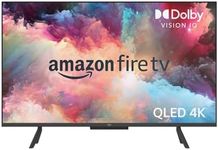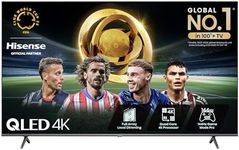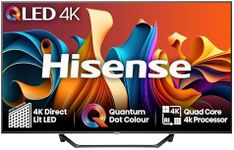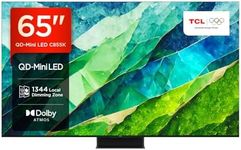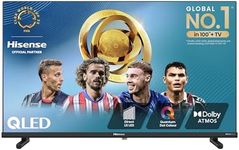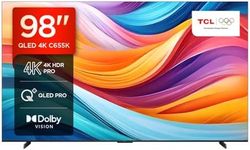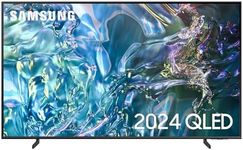Buying Guide for the Best Qled Tvs
Choosing the right QLED TV can significantly enhance your viewing experience. QLED TVs use Quantum Dot technology to deliver vibrant colors and high brightness levels, making them a popular choice for many consumers. When selecting a QLED TV, it's important to consider several key specifications to ensure you get the best fit for your needs. Here are the main specs to look out for and how to navigate them.Screen SizeScreen size is measured diagonally from corner to corner and is one of the most important factors to consider. Larger screens provide a more immersive experience, but you need to ensure it fits well in your space. For small rooms, a 43-55 inch TV might be sufficient. Medium-sized rooms can benefit from 55-65 inch screens, while large rooms or home theaters might require 65 inches or more. Consider the distance from where you'll be sitting to the TV; a general rule is that the viewing distance should be about 1.5 to 2.5 times the screen size.
ResolutionResolution refers to the number of pixels that make up the picture on the screen. Higher resolution means more detail. The most common resolutions are Full HD (1080p), 4K (2160p), and 8K (4320p). Full HD is suitable for smaller screens or if you mainly watch standard definition content. 4K is the current standard and offers excellent detail for most content, making it a good choice for most users. 8K provides the highest detail but is only necessary if you want the latest technology and have access to 8K content.
HDR (High Dynamic Range)HDR enhances the contrast and color range of the TV, making the picture look more realistic and vibrant. There are different HDR formats like HDR10, Dolby Vision, and HLG. HDR10 is the most common and provides a good experience for most users. Dolby Vision offers dynamic metadata for scene-by-scene optimization and is considered superior but is available on fewer TVs. HLG is used for live broadcasts. If you watch a lot of HDR content, such as movies and games, investing in a TV with good HDR support is worthwhile.
Refresh RateRefresh rate is the number of times the TV refreshes the image per second, measured in Hertz (Hz). Common refresh rates are 60Hz, 120Hz, and 240Hz. A higher refresh rate results in smoother motion, which is particularly important for fast-paced content like sports and action movies. 60Hz is adequate for most TV watching, but if you enjoy gaming or watching a lot of sports, a 120Hz or higher refresh rate will provide a better experience.
Smart TV FeaturesSmart TV features allow you to connect to the internet and access streaming services, apps, and other online content directly from your TV. Look for a TV with a user-friendly interface and support for the streaming services you use most, such as Netflix, Amazon Prime, or Disney+. Some TVs also offer voice control and smart home integration, which can add convenience. If you plan to use your TV for more than just watching cable or satellite, smart features are essential.
ConnectivityConnectivity options determine how you can connect other devices to your TV. Important ports include HDMI, USB, and audio outputs. HDMI ports are used for connecting devices like gaming consoles, Blu-ray players, and streaming devices. More HDMI ports provide greater flexibility. USB ports are useful for playing media from external drives. Ensure the TV has enough ports for all your devices. If you have a sound system, check for audio outputs like optical or HDMI ARC.
Viewing AnglesViewing angles refer to how well the TV maintains picture quality when viewed from different angles. QLED TVs generally have good viewing angles, but some models perform better than others. If you have a wide seating arrangement or often watch TV with a group, look for a TV with wide viewing angles to ensure everyone has a good view. This is less critical if you always watch TV from directly in front.
